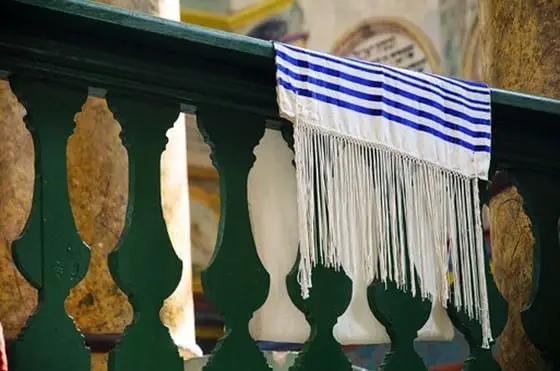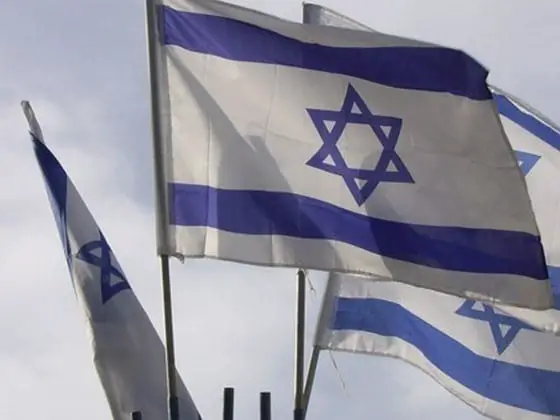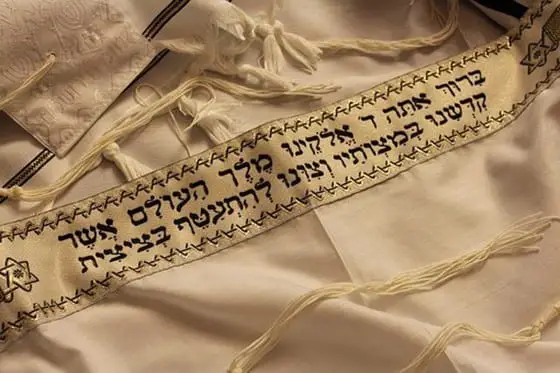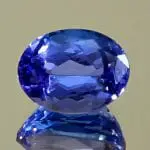The color blue, especially the very shade mentioned in Jewish texts has instigated more research amidst the scholarly and academic circles than any other color ever. The reason is that though there exists a lot of in-word descriptions of it that highlight its immense significance, there is no absolute reference for the shade. This has put historians and religious philosophers in a frenzy to find the exact elusive blue that to this day holds such gravity in Hebrew texts and culture. Symbolism is the language of the mythic, be it any religion or culture. And Judaism is no different. This article shall explore the use of symbolism as well as explicit mentions of the mystic blue, as done in several ancient, modern, and post-modern cultural pieces.
History
The color blue has always held a distinct significance in Northern Africa and the Middle East, and noticeably so in Judaism. Arabs and Jews have held the fixation of blue in common. From doors to ribbons and markings around their houses, they have used blue since the ancient ages to ward off the evil eye. One other use of blue has also been in garments, shawls and cattle-wear, the reason for which is speculated to be ‘protection of purity’ among other mentioned reason by modern academicians.
The significance of blue can be traced back to ancient texts that illustrate how blue represents divinity. It also signifies the dichotomy between equilibrium and turmoil (especially given that it is the color of the sky and the sea). Blue has also found itself deeply ingrained in cultural motifs, garments and personal paraphernalia in Judaism. As an example, one could mention the frequent use of blue in modern tallitot. This also further bolsters the importance of blue, which has been so great in the culture that it has in-fact seeped into modern Jewish trends too. Hence, the true hue of the elusive blue has fascinated religious scholars and historians alike.
Beliefs and Texts that emphasize the weight of the color blue in Jewish culture
The Jewish culture has the importance of blue peppered all over ancient texts, recent history and modern cultural references through symbolism and mentions. Some of them are mentioned below:
- A popular myth among the Jews comes from the Torah. It says that the Israelites were asked to make blue tassels or tzitzit interwoven with twisted threads of blue-violet known as tekhelet. This blue color was a dye derived from a mythical sea creature called ‘Hilazon‘ in Jewish texts. These tassels were to be worn at the end of garments to ward off evil and protect the purity within.
- Rabbinic literature also speaks of sages who talk very highly of the power of this said blue hue. They describe it as ‘color of God’s Glory’, drawing parallels with the tones of sapphire, which was also considered a fairly auspicious gemstone in the piece of literature. Another such instance comes from the Torah scholar and the Sephardic Jewish philosopher, Maimonides, who described this holy blue as ‘color of the evening sky’. Rashi, another prominent Hebrew scholar likens it to the ‘darkening evening sky’.
- Many religious garments and ornaments of high importance adorn a typical shade of blue (some of them even to this day). They include the items explicitly mentioned in the Mishkan, also known as the Hebrew Bible/Tabernacle:
- The Menorah: A seven-lamp ancient Hebrew lamp-stand that is one of the most recognizable symbols in Hebrew culture. It had to be covered in a cloth of blue color before it could be transported to and from a place of worship.
- The Vessels: The holy vessels (the Ark, Table, and the Lamp) had to also be veiled in a blue velvet cloth of rich making before they were ready to be moved.
- Ark of the Covenant: The blue Tekhelet protected the headdress of Jewish High Priests called the Ark of the Covenant. This fascinating hue also had a purple counterpart called argaman. This seems to be a direct descendant of the use of blue by the early Egyptians.
- According to the Zohar, which is the foundation of the ensuing literature in Hebrew mystical thought called Kabbalah, blue is of major importance. It says that it is considered auspicious to see any color in your dreams apart from the exact blue hue of the Tekhelet.
- This hue of azure blue also finds honourable mentions in the Shema prayer. It is notably written, “And they are to place on the tzitzit of each corner a thread of tekhelet (Bamidbar 15:38).”
- According to the Torah, part of the tzitzit should be dyed with the tekhelet color. The Gemara describes the color of the tekhelet as “similar to the sea, and the sea is similar (in color) to the sky” (Menachot 43b).
- Mentioned further in the text under Exodus 24:10-11, is a more detailed parallel between the blue of the Tekhelet and Sapphire. It says, ” and they saw the God of Israel, and there was under His feet the like of paved work of sapphire stone, and the like of the very heaven for clearness.“
- Rashi, the prominent Jewish scholar mentioned above, also drew some very detailed numerological symbolism with Tekhelet blue. He explains that the gematria (numerical value) of tzitzit is 600. Then the eight strings of tzitzit add 8, and the five knots of tzitzit adds 5, equaling a total of 613, a number which corresponds to the 613 mitzvot. According to Rashi, this could be the reason why the tzitzit is directly related to the mitzvot of God and is hence of immense importance to the Jews. The ‘mitzvot of God’ are nothing but 613 Commandments listed down in the Torah, which relates it to ‘The Rules of God and Humanity’ found atop Mount Sinai according to scriptures.
- One very awe-inspiring fact is the alignment of the aforementioned fact with scientific evidence. In a scientific study by scientists, J. Wouters and A. Verhecken examined the dye obtained from the Murex trunculus snail. According to the P’ Til Tekhelet Association, this is the snail that produces the true tekhelet dye. Interestingly, the largest absorption of light was recorded at a wavelength of exactly 613 nanometers. This could be another explanation to the speculation as to why looking at the tekhelet would remind a Jew of the mitzvot.
- The Talmud, an incredibly important intergenerational ancient text that offers insightful commentary on the Mishnah, also mentions it. It provides some highly valuable insight into how one can make this color/dye. It says ‘The blood of snail and chemicals need to boil to achieve the symbolic hue’. This is very exciting news because it matches the Egyptian means of making blue dye, a culture originally thought to have inspired the blue fixation in the Jewish traditions.

Origin of the mythical blue in Jewish culture
Jewish cultures derive from a lot of ancient Arab, Mesopotamian, and Egyptian symbolism and meaning. Hence, it makes sense to investigate the presence of blue and its importance in these aforementioned cultures. According to an article by Times of Isreal, author Marissa Newman draws some reasonable analogies with Egyptian use of blue and its effect on the Rabbinic culture and beliefs. She writes, ‘ancient Egyptians had quite a history with the blue lapis lazuli stone. It sparked the production of the first imitation dyes, and the color’s recurring presence in different cultures’ ritual items and jewelery mimics that of the Jewish reflects its importance. Punctured snail shells dating to the 10th through 7th centuries B.C. showcase how the ancients extracted the substance needed to create the unique shade.’ This is also in agreement with that of what the Talmud says.
Similarly, the Mesopotamian horned crown was a major piece of cultural significance that carried the ‘lapis lazuli’ stone. Hence, It is possible to speculate in this direction too, that the importance of the stone and its vibrant color trickled down to the Hebrew texts, symbolism and myths.
Modern Sightings and Significance
The first modern reference that would come to one’s mind would be the Israeli flag that adorns David’s star with the alleged ‘Tekhelet blue’ and white. This star motif and vibrant blue are reminiscent of the tallit or prayer shawl that is common in Judaist praying rituals. This further reinforces the parallels between the ancient Hebrew symbolism of the Tekhelet and modern Jewish culture.

A second instance could be found in current Hanukkah colors that see themselves adorned on gifts and celebration items (especially in the US). The Tekhelet blue and white makes a sensible effort in making sure the modern Jews know their heritage and connection with the Tekhelet and the mitzvot.
Conclusion
Though many believe that the long-lost mystical Tekhelet blue has now been recovered by noted chemist Otto Elsner, it is still up for debate to some. Elsner had extracted the dye from the snail and to his disappointment, it looked more purple than blue. However, on exposing it to UV rays, it turned into a beautiful color that resembled the pale sky. This color, though seems to match textual descriptions of the Tekhelet, there is simply no way of cross-checking this type of thing.
Regardless, the importance of the color blue among modern Jews lies in its constant reminder of their rich scriptures and heritage- a cultural monument that upholds their holy idea of mitzvot. No matter the exact shade of the blue, it shall always connect a Jew to his/her traditions and culture, which in itself is of paramount importance in this ever-changing world of melting pots and globalization.





